What do candidates on the HSG253 Line Breaking course actually do?
As with all Technical Training Solutions courses, the health and safety issues concerned with line breaking are addressed first and foremost. This is achieved by involving the candidates in a discussion of which fluids and gasses are used in their process area. The instructor will ask questions about the current pipework marking schemes and isolation codes of practice in use, and compare them to the latest Health & Safety codes of practice (HSG253).
The following are some of the pages from the course notes for this part of the course, describing the ways in which positive isolations can be achieved, discussing the various types of isolations that can be used and describing the alternative levels of isolation security that are necessary, bearing in mind the dangers of the fluids etc.
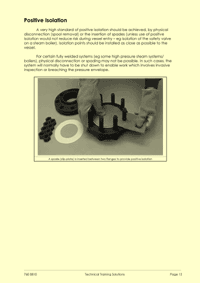 |
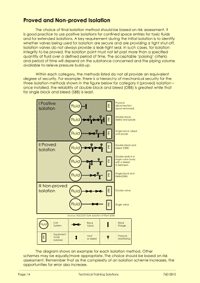 |
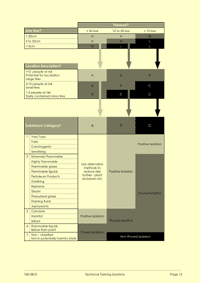 |
Page 13 of the course notes for the HSG 253 Line Breaking course, describing the practical methods by which positive pipework isolations can be achieved |
Page 14 of the course notes for the HSG253 Line Breaking course, describing the different types of isolations that can be used |
Page 15 of the course notes for the HSG253 Line Breaking course, describing the alternative levels of isolation security that are necessary, bearing in mind the dangers of the fluids etc |
The various methods of pipework isolation are then discussed and the candidates prepare a safe method of work document for line breaking. The course then looks at some of the practical issues concerned with joining pipes together properly and tightening flanged joints with even torque to ensure there are no leaks etc.
The practical aspect of the course is fundamental in the training ethos of Learning by Doing. The importance of using the correct tools is demonstrated in a torque exercise whereby we examine the effects of uneven tightness on flange joints. Candidates compare the results of using combination spanners, adjustable wrenches and torque wrenches. The following are some example pages from the course notes for this part of the course, discussing line breaking pipework isolation procedures, examples of the common pipework joining methods and tightening flanged joints in pipes with even torque.
 |
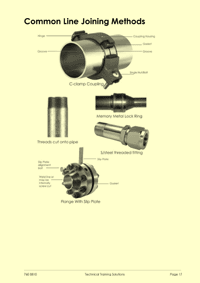 |
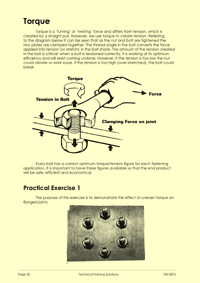 |
Page 23 of the course notes for the HSG253 Line Breaking course, describing line breaking pipework isolation procedures |
Page 24 of the course notes for the HSG253 Line Breaking course, describing examples of the common pipework joining methods |
Page 25 of the course notes for the HSG253 Line Breaking course, describing the tightening of flanged joints in pipes with even torque |
In order to bring home the importance of best practice and planning of pipework isolations, various isolation rigs are used for the candidates to practice writing method statements for line breaking at various points on them.
When this task is completed the candidates (working in pairs) will swap method statements with other groups and implement them to see if there have been any safety breaches. Padlocks, paperwork and testing is required to demonstrate best practice.
Invariably candidates will find that their method statements do not work out in practice, but this is an important learning outcome of the training course. By making mistakes on the rigs and learning from them, a better understanding of the workplace issues can be gained. The following are the training rigs used for this important part of the HSG253 Line Breaking course.
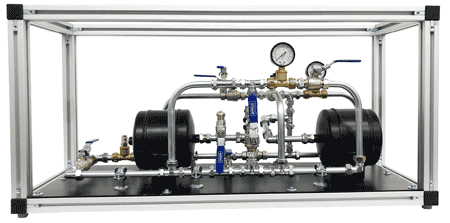 |
Practical rig No1 used on the HSG 253 Line Breaking course, helping candidates gain meaningful practice of line breaking pipework isolation procedures |
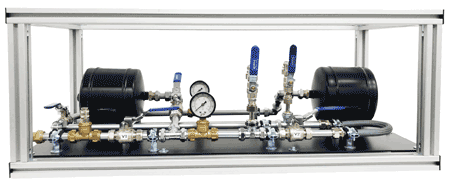 |
Practical rig No2 used on the HSG253 Line Breaking course, helping candidates gain meaningful practice of line breaking pipework isolation procedures |
Finally the course closes with consolidation questions which the candidates will have to answer. These take the form of 15 multiple choice questions which will demonstrate that the candidates have understood the key issues raised in this valuable course.
If you would like to learn more about the Line Breaking - HSG253 course then please call us.


